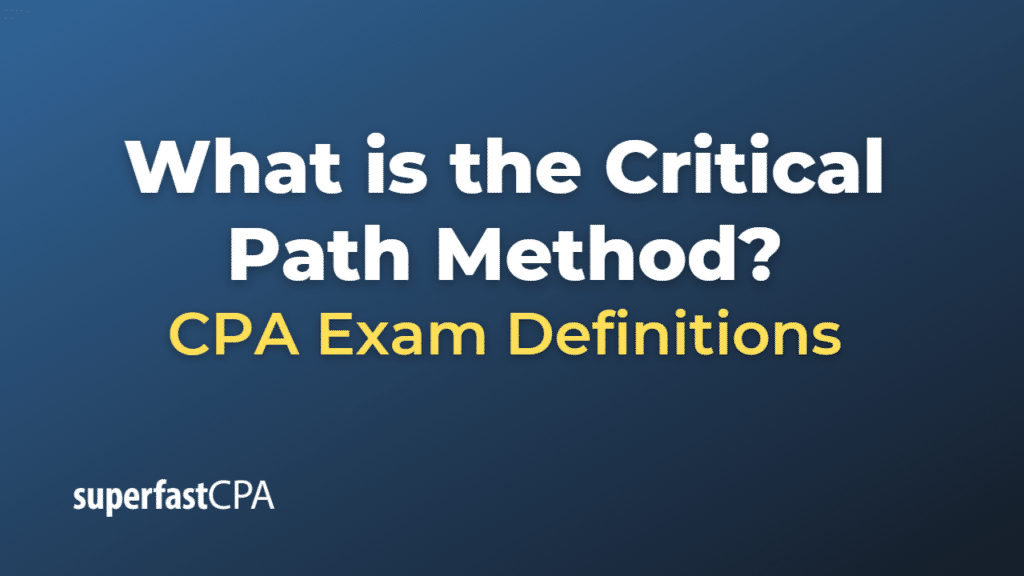Critical Path Method
The Critical Path Method (CPM) is a step-by-step project management technique for process planning that defines critical and non-critical tasks with the goal of preventing time-frame problems and process bottlenecks. It’s particularly useful for complex projects with interdependent activities.
The Critical Path Method involves the following steps:
- Define the Required Tasks: List all tasks that are involved in a project.
- Establish Dependencies: Determine the order of tasks and which tasks depend on others.
- Draw the Network Diagram: Use a flowchart or other diagram to visualize the order of tasks and dependencies.
- Estimate Time or Duration: Each task is assigned an estimated duration. This is often done based on past experience or industry standards.
- Identify the Critical Path: The critical path is the sequence of tasks that takes the longest to complete. If any task on the critical path is delayed, it will delay the entire project. Hence, it’s “critical” that these tasks are completed on time.
- Update the CPM Diagram as Needed: As the project progresses, it may be necessary to update the diagram to reflect the current state of the project.
One of the advantages of the Critical Path Method is that it helps project managers identify which tasks are critical for the on-time completion of the project and which tasks have flexibility (or “slack”) in their scheduling. This can help in allocating resources more efficiently and managing risks better.
However, it’s important to note that the Critical Path Method assumes that the duration of tasks and the dependencies between tasks are known with certainty, which is not always the case in real-world projects.
Example of the Critical Path Method
Let’s consider an example of using the Critical Path Method (CPM) in a simple project: organizing a conference. This project involves several tasks, such as:
- Booking a venue.
- Arranging speakers.
- Organizing catering.
- Sending invitations.
- Setting up the venue.
Here’s how we might use the CPM:
- Define the Required Tasks: We’ve already listed the tasks above.
- Establish Dependencies: Some tasks depend on others. For example, we can’t send invitations until we’ve booked the venue and arranged the speakers, and we can’t set up the venue until we’ve organized catering.
- Draw the Network Diagram: We could draw a flowchart showing the order of tasks and dependencies. This could start with booking the venue, then arranging speakers, then sending invitations and organizing catering in parallel, and finally setting up the venue.
- Estimate Time or Duration: Based on past experience, we might estimate 2 weeks to book the venue, 3 weeks to arrange speakers, 1 week to send invitations, 2 weeks to organize catering, and 1 day to set up the venue.
- Identify the Critical Path: The critical path is the sequence of tasks that takes the longest time. In this case, it’s: book venue (2 weeks) -> arrange speakers (3 weeks) -> send invitations (1 week) -> set up venue (1 day). This path totals to about 6 weeks and 1 day. Any delay in these tasks will delay the entire project.
- Update the CPM Diagram as Needed: As the project progresses, if any delays or accelerations occur, we would update the diagram and time estimates to reflect the current state of the project.
This is a simple example, but it illustrates the basic steps of the Critical Path Method. In more complex projects, there may be many tasks and dependencies, and the network diagram and critical path can be much more complicated. However, the fundamental approach remains the same.













